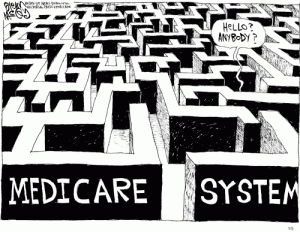Howard Glickman takes a thoughtful look at assisted living. While a good read, I am not so sure he has it quite right in a number of areas.
It is likely you saw the Howard Glickman Forbes article published November 25, 2014 titled “The New World of Assisted Living.” It has been referenced in most of the senior living related groups I subscribe to on LinkedIn. It is a good and thoughtful read, though there are several of his conclusions I don’t see the same way and some other important things I think he missed.
Only time will tell as the senior living world evolves and, in truth, it is more likely than not that we with both be more right and more wrong than we know.
Stuff I Am Not So Sure About
- “Assisted living was once a creative alternative to nursing homes. Soon, something new will replace ALFs.” While I would agree that for some residents, assisted living is and was a “creative alternative to nursing homes,” more often it was about providing housing with some additional services to elders who were not anywhere close to needing skilled nursing. Assisted livings is all about individuals who still have a significant amount of living to do.
- “ALF residents are quite sick, often with multiple chronic illnesses. Four in ten have dementia (a higher percentage than nursing home residents), one quarter suffer from depression, one-third have diabetes, and more than half have high blood pressure.”
I really dislike characterizing assisted living residents as “quite sick.” While I agree many residents have multiple medical needs, I don’t think their fragilities are what defines them or at least what should define them in assisted living. I think this is one of the key differentiators between skilled nursing and assisted living.
- “How do they meet the needs of their residents? By some measures, not very well. One in five residents will visit an emergency department in a 12-month period and nearly 24 percent will be hospitalized, the NSLCP reports.”
The report this allegation is based on is behind a pay wall so I was only able to read the abstract, which has very limited information. Overall though, the evidence is pretty compelling that assisted living is meeting the needs of the residents very effectively. That one in 5 will visit an emergency department in a 12-month period or 24% will be hospitalized really tells us nothing without a basis of comparison. Those could be terrible numbers, but they could be spectacularly wonderful numbers.
- “Fewer operators: As payments are squeezed, small and medium-sized providers will close or be acquired by larger operators. Many small not-for-profits will disappear.”
Howard is not the first person to suggest this trend and, to some degree, I agree there has been and will continue to be some consolidation in that larger players will grow larger and absorb smaller players. What I am not convinced of is that it has anything to do with a payment squeeze.
Largely there are two factors at play: Smaller and even some larger players are selling all or a portion of their portfolios because values are so high and it is a great way to realize profits. This is not a sign of squeezed anything. The second factor is that large successful companies are focused on continuing growth and there are two primary ways to grow: build new buildings, which takes time and people, or purchase portfolios.
Finally we are seeing significant numbers of new operators coming into the space every year, which would suggest that rather than payments being squeezed things are very healthy. This is further backed by data coming out of NIC.
- Fewer heads in beds: The old business model was based on filling rooms. The new one may focus on virtual assisted living that delivers services to people living in the community rather than in its buildings. I am not at all ready to write off the old business model. It is clear that some organizations are looking at serving elders at home rather than in a senior living community, but less as an alternative to senior living and more as a feeder to assisted living and as an additional source of revenue.
Tomorrow: Part Two, my predictions for assisted living/senior living in the future.
Steve Moran








